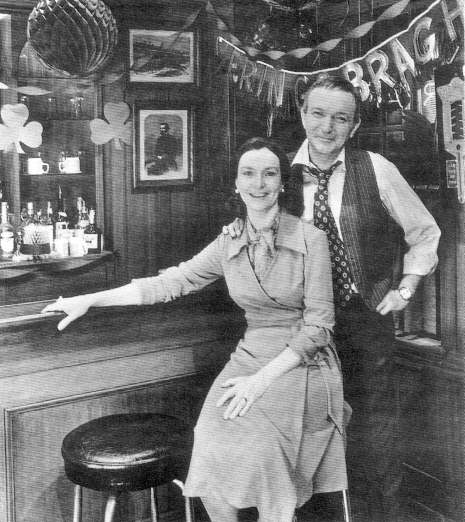
Worlds Without End:
The Art and History of the Soap Opera
Copyright 1997
Foreword by Robert M. Batscha,
President of the Museum of Television and Radio
Article Provided By WandaRyan's Hope debuted on July 7, 1975, as a throwback to an earlier soap opera era. Rejecting the youthful characters, sexual situations, and pretty faces that pervaded the genre following the success of All My Children and The Young and the Restless, creators Claire Labine and Paul Avila Mayer (who had helped revive Where the Heart Is and Love of Life) brought to life a series revolving around a single Irish-American famiy, complete with all the characters and storytelling possibilities implicit in that tradition.
Drawing on an Irish heritage in both their families, Labine and Mayer's work tapped into the same essence that had made Irna Phillips's work so successful: in fact, no daytime serial has focused so intensely on familial relationships since the heyday of As the World Turns. Where Mayer and Labine departed from tradition was in using a real setting, New York City, a single core family, and a Roman Catholic, not Protestant, morality. Moreover, they rejuvenated decades-old family themes with fresh, strong writing and a contemporary attitude. Within a year of its debut, Ryan's Hope was ABC's second most popular soap.
The interfamilial conflicts of the Ryan clan were largely responsibile for that success. In long conversations, deeply personal confessions, and petty squabbles, the opposing values and aspirations of parent and child, the long-held resentments and jealousies of brothers and sisters and the inevitable betrayals and accomodations of husband and wife were explored in detail. Even tragedy, such as the accident that left oldest son Frank fighting for his life, provided an opportunity for poignant scenes of bonding and recrimination.
Ryan's Hope also had success with a series of memorable romances: Frank Ryan and Jillian Coleridge, separted for nearly a decade by the machinations of his wife, Delia, and a series of misunderstandings; strong-willed Mary Ryan and equally stubborn reporter Jack Fenelli, whose marriage ended tragically in a mob hit; and Siobhan Ryan and mobster Joe Novak, whom even death could not separate. But the show was soon overshadowed by many of the very trends that it had rejected. As General Hospital shot to the top of the ratings, Ryan's Hope became an anomaly on ABC's schedule. An old-fashioned soap opera in a block of youth-oriented, fast-paced dramas. The show tried to compete by airing a series of stories borrowed from the plots of famous movies, but the attempt misfired.
And then began a pattern that would mark the final years of Ryan's Hope. ABC, unhappy with the show's ratings, brought in a new head writer who shifted the focus away from the Ryans, eroding the audience further. Then the network reinstated Labine and Mayer, who reinvigorated the core family and reemphasized the strong moral world they lived in. But the ratings didn't go up fast enough for ABC, so they brought in yet another new writer, and so on. The result, from the audience's point of view, was incoherent and inconsistent. The low ratings made cancellation inevitable. On January 13, 1989, the final episode aired. It was a bittersweet ending for a show of unique grace, dignity, and heart, qualities that helped to bring Ryan's Hope an unprecedented six Emmys for writing.
Paul Mayer and I had been heading writing Where The Heart Is when it was cancelled. We sent some of our scripts and outlines around, and ABC said, "Come in and talk to us. How would you like to develop a new serial called City Hospital?" And we said, "City Hospital? Let us think about that." In the fall of 1973, CBS signed us to write Love of Life. The day after, we did a development deal with ABC for a new serial. We had gone to them and said, "What would you think about a show about an Irish-American family that runs a bar across the street from a city hospital, in which one of their sons is an intern?" And they said, "Swell."
We did that because on Where the Heart Is, we had had a prolonged sequence with two characters who were having an affair. He was a respected college professor, so they were meeting on the other side of town in a small Irish bar called O'Neill's Red Hand.
We had so much fun with that bar and that whole sequence that we thought, "We want to write about an Irish bar." Well surely, you're going to have a politician coming out of that, and surely he's going to be in trouble all the time. We thought it enormous fun to make the heroine the adulterous party in the triangle. And then Delia, his incredibly ditzy, over-the-top, wonderful, enchanting, neurotic wife, who was going to slowly drive the family crazy.
It all just evolved, we knew who these people were so well, and soon the Ryans were the ones who were telling the stories. We didn't have a lot to do with it.